Business vehicle write-offs under current law help company owners deduct more than ever – faster than ever – from their taxes. But the specifics are sometimes confusing (not to mention they can change year by year).
Never fear: I’m here to help. Let’s dig into the nitty-gritty of vehicle write-offs for your business, so you understand exactly how to maximize deductions and minimize your business’ tax burden.
Auto-Related Tax Deductions Aren’t Travel Expenses
First and foremost, remember that auto deductions aren’t a subcategory of your business’ travel expenses. They pertain to costs related to any vehicles you use for business purposes (to at least some extent).
The travel deduction category, meanwhile, includes things like airfare, lodging (hotels or Airbnb stays) , transportation (taxis , rideshares, rental cars, tolls, parking, and so on. (I addressed travel expenses in another recent article: “Plan Your Travel for a Big Tax Write-Off.”)
Most vehicles qualify under the auto deduction: sedans,, SUVs, trucks, motorcycles, RVs, vans, and various delivery vehicles. (Aircraft or trains, however, aren’t eligible for deductions.)
Finding Your Path to the Best Business Vehicle Deductions
As with most tax deductions, writing off a vehicle for business is much more complicated than simply checking a box. At my firm, our clients most often ask about two things regarding auto write-offs:
- Whether to buy or lease business vehicles.
- Using the mileage method or “actual” method to calculate deduction amounts.
Thus, it’s important to understand the two main options business owners must choose from when writing off auto expenses.
The mileage method is a fixed deduction amount (in cents) that you can take for every mile you drive your vehicle for business purposes. Despite the name, it’s not limited to gasoline: It includes almost every expense you might incur related to your car. In addition to fuel, it includes repairs, maintenance, financing payments, and more. (One notable exception is interest payments on any auto loans for business vehicles.) Using the mileage method is much simpler, but its usefulness for your business depends on how much you or your employees actually drive.
The actual method allows business owners to write off all of the expenses listed above, plus depreciation. However, it requires you to keep excellent records, up to and including a mileage log. Final write-offs can be significant with the actual method, but you must consider whether it’s worth the effort you put into documenting these costs.
How to Write Off a Car for Business: Key Considerations
Before we fully dive into the debate between mileage and actual deductions – which can become complicated quickly, with lots of variables – we should address some key factors that can play into your decision. We’ve come up with these as a result of thousands of conversations with clients regarding business vehicle deductions
These rules of thumb regarding vehicle write-offs for business have helped point clients in the right direction while they’re out shopping for a car, truck, or SUV. In a brief consultation either before or after the purchase, we also use the rules detailed below to help clients craft the best write-off strategy for their needs and circumstances.
Our Seven Rules of Thumb
- If you will be driving many miles for your business, and the car is (generally) a lower-cost vehicle than average, the mileage method is probably your best option.
- By contrast, if you aren’t going to be driving all that many miles for company purposes, and the vehicle is of average cost, leaning toward the actual method may be a better choice. The miles you accrue won’t be as beneficial to your deductions compared to what you could deduct if you exactly calculated your fuel, maintenance, financing, and depreciation costs. (Keep in mind that this works most effectively with vehicles used for business 50% or more of their time in operation.) .
- If the vehicle is more expensive than average, used primarily or exclusively for business, and won’t be accruing many miles, it may be best to lease the vehicle and use the actual method for deductions. This will mean lower monthly expenses and allow for a much better write-off than mileage.
- For a lower-cost vehicle that will not accrue many business miles and won’t reach the threshold of 50% business use or more, you can only use the mileage method.
- If you have an extra car in the household that your or other family members occasionally drive for business purposes, you will typically use the mileage method – unless you can provide records proving 50% or more of the car’s usage was business-related. Either way, it behooves you to write these vehicles off just like any others. .
- If you plan to purchase a truck or SUV that weighs 6,000 pounds or more, the actual method will generally be your best write-off option. First, consider the issue of bonus depreciation:. You can immediately deduct up to 40% of the business use value of the vehicle in 2025 and 20% in 2026. (Calculate this amount by multiplying the percentage of business use by the purchase price.) Also, this vehicle will get low miles per gallon and rack up higher-than-average fuel expenses, giving you more to write off.
- For a high-MPG vehicle (either hybrid, electric, or simply compact) that has average business use and miles driven, consider opting for the mileage method. First of all, your operating costs are going to be much lower than an average gas vehicle. Additionally, percentage of business use doesn’t matter unless you reach or exceed that 50% total. Finally, for electric and hybrid vehicles, you may qualify for the Clean Vehicle Tax Credit on top of your mileage deduction.
Remember: Though the situations and circumstances described above are scenarios our firm’s members have observed, they may be just hypotheticals for you. You must consider your business vehicle usage and purchase habits – and meet with your tax advisor – before choosing any deduction method.
The Mileage Method
This strategy is an excellent fallback if you aren’t certain about your record-keeping or doubt your ability to prove 50% or more of business use. The mileage method allows you to get at least some write-off value for any business vehicle.
In 2025, mileage deductions are as follows:
Business: 70 cents per mile (a 3-cent increase from 2024)
Charity: 14 cents per mile (no change)
Medical: 21 cents per mile (no change)
Moving for qualified active-duty servicemembers: 21 cents per mile
In the past, the overwhelming majority of our clients (about 90%) used the mileage method. It’s entirely understandable why – using mileage to calculate use is simple and can add up to a large deduction if significant vehicle travel is integral to a business. But legislative changes in recent years have made this issue much less straightforward.
The Actual Method
As we noted above, with the actual method, business owners must track the exact costs of fuel, maintenance, insurance, repairs, insurance, depreciation, lease payments (if applicable) and other common expenses. Mileage cannot be a factor in calculating deductions according to this method.
Due to limits imposed back in the 1980s, a business owner’s depreciation deduction was once fairly low by comparison to today. For example, if you bought a $40,000 car and drove it entirely for business purposes, your maximum auto deductions for the first five years would only be $15,060. To fully depreciate the car would take 19 years.
The Tax Cuts and Jobs Act passed in 2018 made some major changes to depreciation guidelines, both of which benefit the small business owner:
- Annual depreciation limits are much higher ($12,400 for the first year as of 2024, then $19,800 in 2025, $11,900 in 2026, and $7,160 in 2027 and any subsequent years).
- Bonus depreciation deductions can reach as high as $8,000, though it only applies for the first year the vehicle is in use for business.
- These deductions can still apply if you convert a personal vehicle for business use.
- The vehicle can be new or pre-owned.
For vehicles that weigh over 6,000 pounds but less than 14,000, annual depreciation limits differ.
Writing off a vehicle for business that falls within this weight bracket has a $31,300 annual depreciation limit for SUVs. Pickups, box trucks, passenger vans with 9 seats or more, and cargo vans in the same weight class have no limit on annual depreciation or first-year bonus depreciation. Business vehicles that weigh more than 14,000 pounds also have no depreciation limits.
As such, if you bought a $40,000 car in 2024, you can write off more than 80% of the vehicle’s cost in the first two years. Factoring in fuel, repairs, and other expenses, you could potentially write off the total cost in that period. (This would be all but impossible if you used the mileage method.
Taking all of this into account, the main issues to consider when choosing between the actual or mileage method are as follows:
- The vehicle’s initial total cost
- Average MPG
- Bonus depreciation (for any new vehicle purchase)
- Total repair costs (or your estimation of repair and maintenance expenses)
Projected annual miles traveled in the vehicle
Leased Vehicles
Leasing can be a phenomenal strategy for auto-related tax deductions, though it does comewith certain drawbacks.
You can write off all of the expected vehicle expenses, including a percentage of the lease payment (equivalent to the vehicle’s percentage of business use). Also, if your business requires purchasing luxury cars (e.g., a private car or limo service), monthly payments may be cheaper than financing if you lease.
The drawback comes in the form of the annual mileage limitations that many manufacturers or dealers place on leased vehicles. If the lease allows 15,000 miles traveled per year, for example, and you use the vehicle frequently, there is a strong chance you’ll exceed the annual limit for at least one of the years that the car is in your possession. When you finally turn in the vehicle at the end of the leasing period, you must pay for every mile you went over the limit. Although dealers’ limits and overage charges vary, 15 to 30 cents per extra mile is far from uncommon. This can add up quite a bit for high-use leased vehicles.
Leasing may be most useful for business owners who want an additional car (i.e., one more high-end than their regular work vehicle) for special occasions. For example, think of a sales executive looking to make a strong first impression on prospective buyers who have an eye for luxury. Mileage isn’t likely to be high in this situation, and using it to take prospects or existing customers out to lunch may have a return on investment that far exceeds the leasing costs.
Tracking Mileage
No matter what method you choose, it’s vital that you always keep track of your mileage for every business vehicle you use. (If it’s difficult to calculate the exact figure, estimate it as best as you honestly and ethically can.) If using the actual method, your total miles will determine your business use percentage for every vehicle write-off for your business. For the mileage method, this is the foundation of your business vehicle deduction.
While you can certainly keep a written record of business mileage, it’s better if you track this figure via technology. Plenty of mobile device apps can serve this purpose, tracking your mileage with GPS systems or other methods.
Create a Business Vehicle Write-Off Strategy
To decide which method for calculating auto-related tax deductions is best for your business, I suggest two things:
- Create a spreadsheet to analyze the situation. It doesn’t have to be complex: . Establish columns to fill in the mileage, purchase, and leasing options. Then, use the rows to represent different types of vehicles and scenarios. You can do most of the research and calculations by simply pulling information off the web, ideally from the IRS official site or similarly reputable sources.
- Next, go over the spreadsheet with your accountant or tax preparer and fine-tune the analysis. Often, your tax advisor will be able to devise the best strategy for your auto deductions simply by looking at your numbers, as well as the overall picture of your tax return.
Ultimately, this is a matter of simple (but essential) due diligence. Considering that you are spending tens of thousands of dollars on your business vehicles, some careful deliberation of your options is well worth your time.
Frequently Asked Questions
Can I write off 100% of my business vehicle?
Yes, but only if the vehicle is used 100% for business purposes and never for any personal matters. Any personal usage (calculated by mileage) cannot be written off.
Over the course of multiple tax years, it may be possible to deduct a significant share of the total cost through depreciation. But this is subject to certain limitations, as we describe above. Also, bonus depreciation will not be an option after 2026 (unless there’s a change in the tax code before 2027).
Can an LLC Write Off a Car Purchase?
Yes. LLCs can make business vehicle write-offs just like any other business. But any personal use of the vehicle by LLC owners cannot be deducted.
Can You Write Off Vehicles Over 6,000 Pounds?
Absolutely. In fact, as I detailed in the article above, heavy vehicles have higher depreciation limits than those for business vehicles weighing under 6,000 pounds. With the exception of SUVs, most heavy vehicles have no depreciation limit. However, this only applies to vehicles that are used for business 50% or more of the time.
Can I Write Off My Car Payment as a Business Expense?
Yes, but only some of the payment will qualify for write-off if the vehicle isn’t exclusively used for business. The eligible amount for deduction is equivalent to the vehicle’s percentage of business use, as determined by mileage.
Additionally, interest payments on auto loans can’t be written off.











Question about purchasing an older vehicle. I’m looking at purchasing a pickup truck for my business. An older one (late 90s – early 2000s) and probably won’t spend more than $10k.
Because of it’s age and already depreciated value, can the entire purchase be written off in the first year or is a small purchase price like this still subject to three year? I’m assuming that with the bonus depreciation of $8k, if the purchase price were less than that the entire purchase could be written off in the first year.
Thanks for your help!
Grant